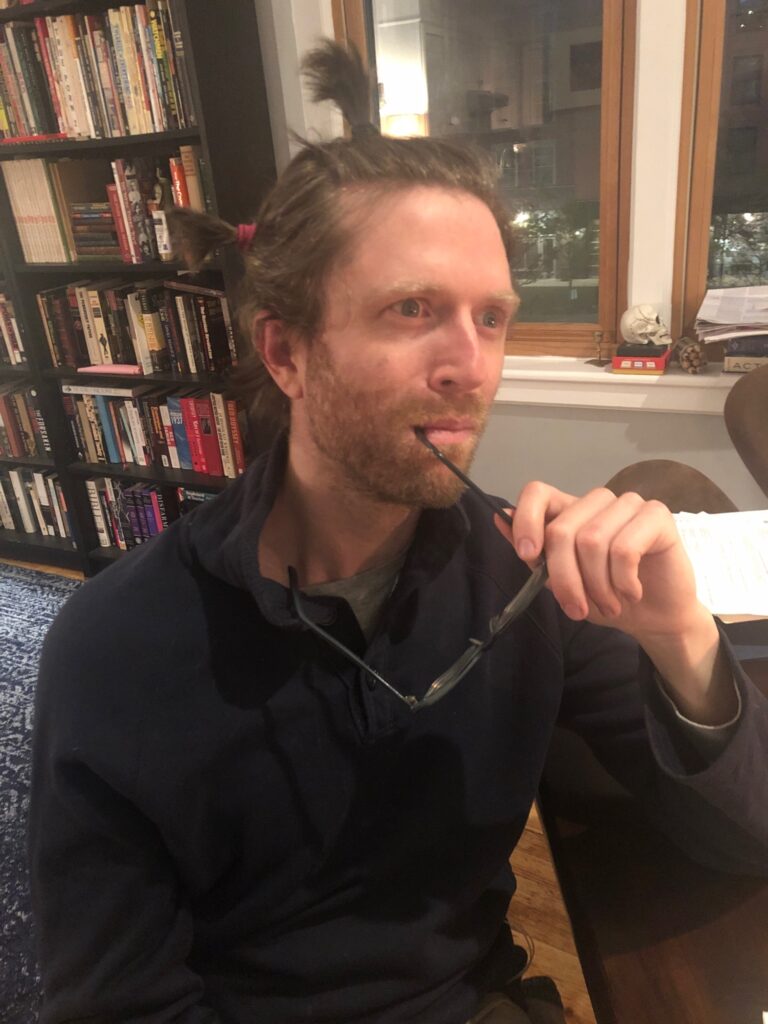I enjoyed these texts and videos more than I expected to. Partly that’s due to their relevance to my current course, the first online one I’ve ever taught, which I want to save from becoming a read, write, submit assembly line. Partly, too, it’s a tribute to the materials assigned. In Thinking History (2008), Stéphane Lévesque reminds us of the revisionist zeal that Baby Boomers brought to historical pedagogy starting in the 1970s. The results were disappointing. The phrases are well known—“student-centered,” “inquiry-based,” “critical thinking”—but their manifestation in thirty-student high school classes, never mind fifty-student college lecture courses, did not follow. Or is that an unfair judgment? Were this a history of education course, that’s one question I would pursue. I don’t recall much rote, worksheet learning in my public high school history classes back in the 1990s, for example. But Sam Wineburg’s findings on how few students can distinguish description from causation in his DBQs on US history confirms that even if students no longer chant the Gettysburg Address from their seats, narrative history still leaves little time for “critical thinking.” What role has the post-Bush testing mania played in this, I wonder.
I chuckled reading Lévesque’s point about ‘90s postmodernism as the point where revisionism did itself in. Teachers were professionalized; history was “diversified”; but theoretically, the compass was broken. Why teach anything, Cambridge’s Richard Evans asked, if it’s all suspect? Why not keep lecturing, the method that gives you the most time to research and write?
The revisionist impulse survived the Lynne Cheney assaults of the 1990s. But now it was more modest, more pragmatic. Lendol Calder recalls entering the classroom fresh out of graduate school, ready to discuss primary sources in a circle, as if graduate school had never stopped. His shift toward “uncoverage,” or in Lévesque’s terms, procedural over purely substantive history teaching, converged with the “decoding” impulse from the University of Washington, all toward a style of teaching based on evidence rather than narrative, questions rather than answers. We’re moving from “sages on stage,” as Lee put it, to classroom “coaching,” per Calder.
Your request that we pose three questions that we’d like to answer during the course, rather than have answered, seems to follow this same method. My questions, at least at the moment, are these:
First, I found it interesting when Wineburg called for more assessments that gauge how students learn rather than what they learn. How can I build this kind of assessment? And I guess I’d use a rubric to help place a letter grade on the result. But how?
Second, we hear not a peep in these readings, with the faint exception of Lévesque, about digital media. How does it change the “coaching” in question?
Third, what are the limits and the possibilities for student-student collaboration in online learning. There’s a trend that didn’t appear in the texts for this module: the group learning approach. Actually, no, the man from UW with the white beard mentioned it on the second video. But how do you do good group work? My God, there’s a riddle I’ve never solved. And perhaps online teaching makes this easier, as you can perhaps better monitor what work has been done. Via which app?
Thanks for well-chosen texts and videos, with videos pared down to exactly the length that we professors are encouraged to pare our lectures to these days—seven minutes or less!
